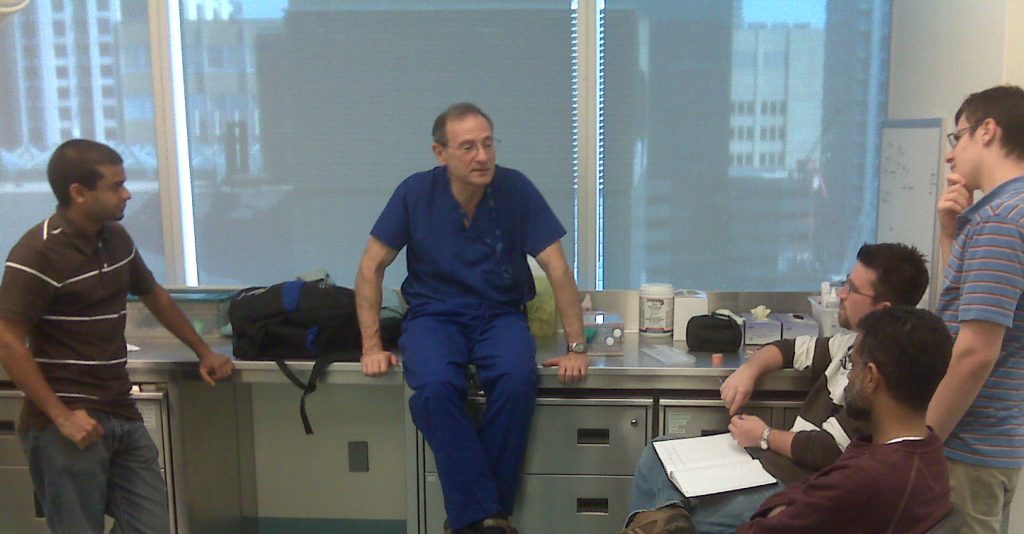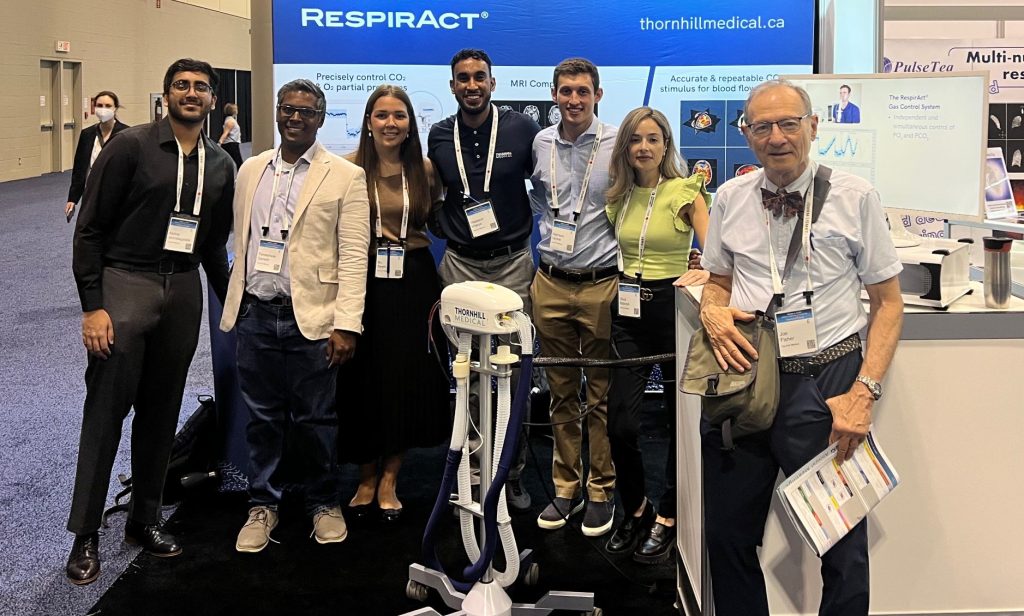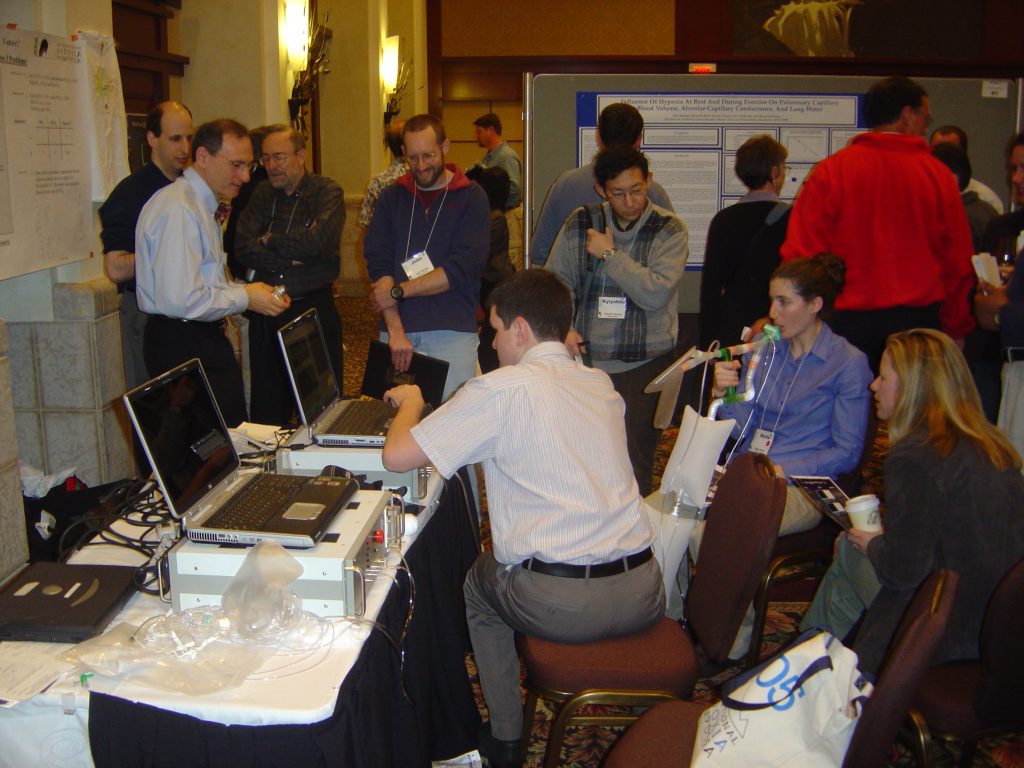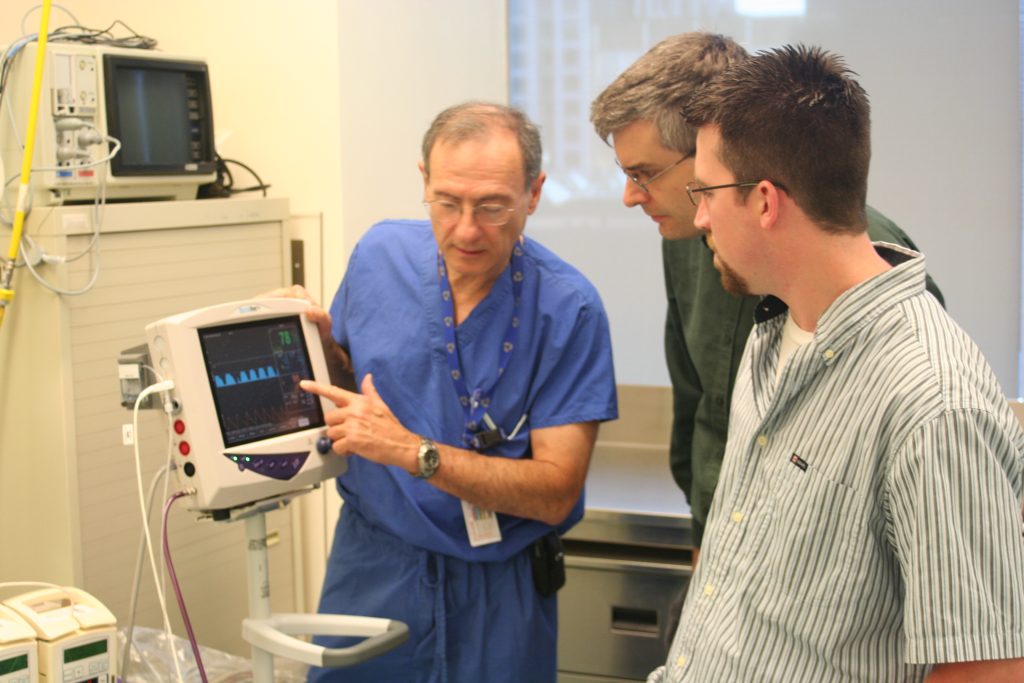Celebrating Thornhill Medical's 20th Anniversary with Dr. Joe Fisher
In conversation with Thornhill Medical Co-Founder and Chief Scientific Officer Dr. Joseph Fisher
Twenty years ago, anesthesiologist and research scientist Dr. Joseph Fisher and his colleague Dr. Ludwik Fedorko co-founded what is now Thornhill Medical as a spin-off from University Health Network, tasked with turning Fisher’s bench research science into practical bedside treatments. The company that was founded is today called Thornhill Medical and Dr. Fisher is the Chief Scientific Officer.
Dr. Fisher is also Professor Emeritus in the Department of Anesthesiology and Pain Medicine at the University of Toronto. Dr. Fisher holds specialty certification in Internal Medicine (US, Canada) as well as Anesthesiology (Canada). Dr. Fisher had also practiced rural family medicine, emergency medicine, and had been involved with disaster medicine. His academic career includes clinical and basic research in cardio-respiratory physiology, neurovascular physiology, pharmacology, and critical care. Dr. Fisher’s work has resulted in more than 270 peer reviewed publications and 70 granted and pending patents covering the company’s products. Thornhill Medical’s vision is “to make the technically and scientifically inconceivable, a reality”.
As Thornhill Medical celebrates its 20th anniversary, Dr. Fisher shares his insights into the history, science, vision and motivation that has shaped Thornhill Medical’s first two decades.
Today, Thornhill Medical is a global leader in critical care and neurodiagnostic technology. Dr. Fisher, please tell us about the early origins of the company.
"Thornhill’s founding was the culmination of a series of events. Well before Thornhill Medical came into existence, I had a laboratory where I worked with some very enthusiastic undergraduate students to develop some very unique methods that would enable us to control blood gasses independent of the extent and pattern of breathing. This was remarkable only because it was considered to defy the universally accepted principles of respiratory physiology (and still thought so by many today).
One day, a medical corpsman in the U.S. Navy named Tommy Eagles was introduced to me by a mutual friend who worked for the Canadian military research department. Eagles paid me a visit at the Toronto General Hospital and shared his vision of eliminating the need for oxygen tanks on the battlefield. The provision of oxygen tanks is not only cumbersome, but expensive to transport, and a high risk of causing massive explosions if hit by a bullet or shrapnel.
Some of the devices we had already developed convinced me that we might just be able to use an oxygen concentrator producing 3-4 L/min of oxygen to provide 90% inspired oxygen to someone breathing at 15 L/min or more.
Tommy Eagles arranged for me to travel to a number of military bases around the US to see if I could convince other experts of the feasibility of my proposals. Most remained unconvinced. But some were enthusiastic and advocated that it deserved a try.
Fortunately, Commander Eagles agreed with the minority. I secured a contract with the U.S. Marine Corps, for a series of progressive proof of concept projects. This funded the founding of the company and the hiring of staff. The rest is history."
You have made it possible for Thornhill Medical to deliver game-changing innovations, including MOVES® SLC™, MADM™, ClearMate™, and RespirAct® - all driven by your scientific work. What is the connective scientific work behind them?
"It is hard for others to believe that it all comes down to being able to control gasses, meaning oxygen and carbon dioxide, in the blood, independent of how people breathe. The ability to do that is very powerful, and it is the core science that binds all of these innovations – the original MOVES®, the new generation MOVES® SLC™, ClearMate™, and RespirAct®.
And the consequences of the technology are substantial. MOVES® allows us to eliminate oxygen tanks in the field. ClearMate™ simplifies and strengthens the elimination of carbon monoxide and ethanol (causing alcohol poisoning) from the blood in ways that have never been previously considered. RespirAct® makes it possible to i) target the blood carbon dioxide concentrations in order to precisely stimulate brain blood flow for brain stress tests, ii) enable the lung clearing of carbon monoxide, ethanol and other volatile hydrocarbons; and iii) oxygen concentrations to provide needle-free contrast for imaging (oxygen), and measures of regional brain hemodynamics.
One must emphasize that, the technologies required to perform these tasks have been known for over a century. However, it was these approaches to their use that were not previously anticipated, and hence not applied.
To summarize, our novel approach to blood gas control –as opposed to introduction of new technology—is what opened the path for consequential innovations in diagnostics and therapeutics across these multiple medical and scientific fields."

20 years after Thornhill Medical was founded, the fundamental technology behind MOVES® SLC™ is still unique in the marketplace. What does that say about the science behind the technology?
It is difficult to understand how it is possible to introduce a scientific and medical revolution with well known materials and technology.
This occurs because the revolution is not one of material or technology--but one of thinking and process. In the center of the process component is that of designing self-regulating systems even using well known technology. The technology is only required to support the process, while drawing on the power of self-regulating systems.
Proof of this is that in these times of explosive development of materials and computing power, our scientific approach has continued to excel unrivaled for almost a quarter of a century.
The cycle from science to application at Thornhill Medical is in in the process of repeating every day. We develop new applications. People bring us potential applications, and problems for us to help them solve. This leads to new insights and discoveries. Every Day!

A common challenge for scientists is making the leap from lab to market. What has made Thornhill Medical make that leap successfully?
I take a lot of pride in this.
The initial concepts and the science was unique. I admit it was not intuitive to most experts, and not easy even for our insiders to see our proposed solutions being effective.
So what are the steps to commercialization?
- Getting the doctors to understand how it works: Overcoming the hurdle of skepticism, leads to the adopters become strong, informed advocates.
- The device works as advertised. The self regulation approach provides finely controlled and robust action.
- Simplified mechanisms optimize both cost and operational efficiency.

Thornhill Medical is celebrating 20 years of scientific-based innovation. What excites you the most about the next 20 years?
When companies stop innovating, half will fold within five years. It’s incumbent on Thornhill Medical to continue product development, regardless of how successful our current suite of products is.
This mind set of continued innovation excites me – I don’t think we are farther than the entry level of the “inconceivable” things our products can still perform.

What are your proudest accomplishments?
There are a couple of key scientific accomplishments. Specifically, the self regulation that I call ‘sequential gas delivery’ that allows precise gas control in the blood independent of subject breathing pattern.
Sequential gas delivery is what allows us to do the magic in each one of our major devices—MOVES, ClearMate, RespirAct™. What makes it amazing is that as different as each product is, the backbone of the technology is the same -- but the thinking behind the technology is different, and we get a different product action. This unique status separates us from most other medical technology, and that makes me very proud. For example, another insight we had was to extract some oxygen from red blood cells while they are in the lung (and so make them paramagnetic) and suddenly replace it (snapping back to diamagnetic). This generates a unique opportunity for highly precise hemodynamic functional imaging using MRI.
I believe this invention of our team will be of the biggest consequence to medical practice in my career and become a very large part of our scientific legacy.

How is your own story interwoven with that of Thornhill Medical?
I was born in a DP camp in Germany after WWII and arrived with my parents in Canada as refugees. This is a long story that involves a cast of characters including Pope Pius XII--that is for another time. We had very little, and my father worked very hard to provide opportunities for his children. After graduating from medical school, I practised family medicine for two years before pursuing two residencies, first in Anesthesiology and then a second in Internal Medicine, both at U of T. I’ve always had a special interest in both critical care and health care innovation, and longed to bring ideas to the bedside. Thornhill has been an expression of this longing.

When you think about your journey so far, and that of Thornhill Medical, who else has been part of that journey?
For me, personally, the most important person in my life has been my lifelong partner, Sarah. I don't think anything would be here without my wife and her incredible support. She stood with me and encouraged me every step of the way. And of course, my parents. They believed in the high importance of making contributions to society and assiduously raised all their children to aspire to the same. They succeeded in their children. And in their grandchildren. And, if I may say so, it appears, highly likely in their great grandchildren.
Then there is the Thornhill Medical staff – all the people who work here. I am very grateful to these colleagues. Without them, I would have nothing to show. Sure, I have ideas, but I don’t make things, and these people take ideas and inanimate materials, enhance and shape them to make things you can hold in your hands—that work! (Phraseology attributed to my friend, the late Eduardo Masionis!)
I can think all I want, but we would have nothing without them.
The products that they are making are having an impact on the human condition. I think these products will be part of the history of medicine, and hopefully, the legacy of the human race.
I think we all should take pride in that, as I take pride in the work that we all have accomplished.
